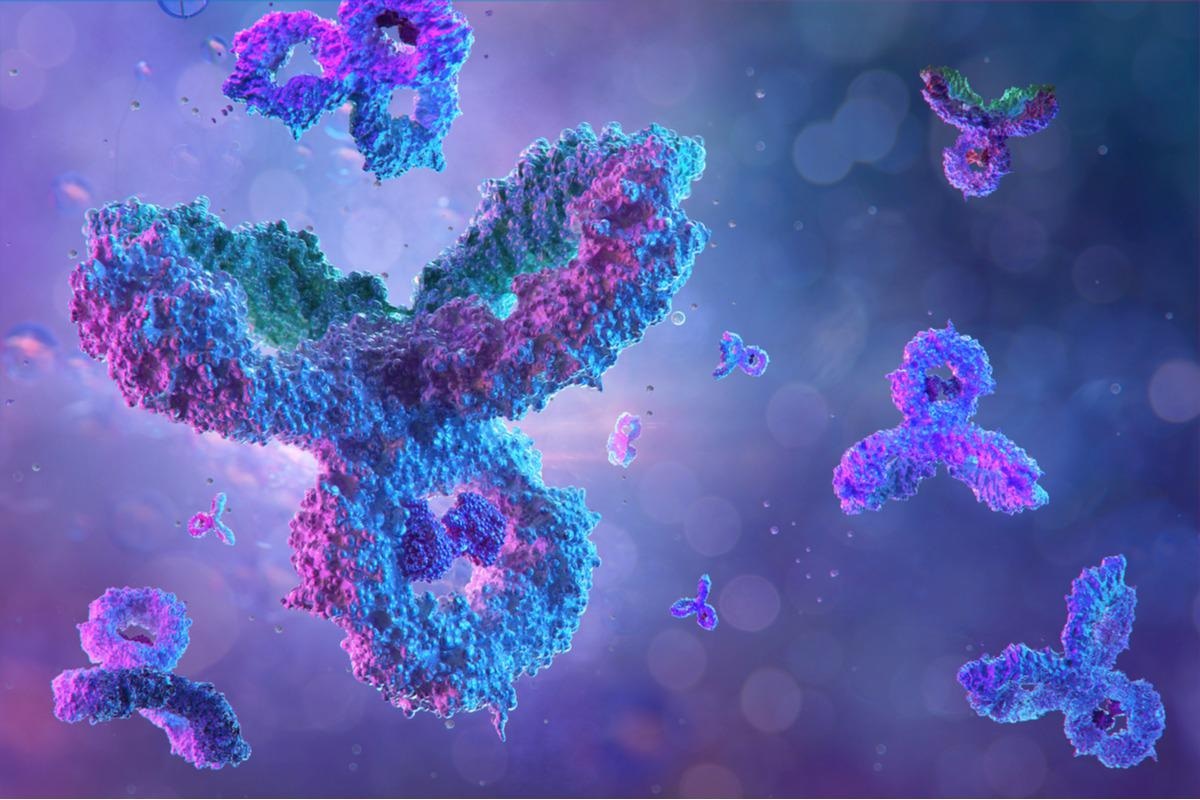In a recent study posted to the bioRxiv* preprint server, researchers observed that immunoglobulin A (IgA) responses against severe acute respiratory syndrome coronavirus 2 (SARS-CoV-2) are modest and wane much sooner than IgG responses.

Background
IgA antibodies are the most abundant antibody isotypes in the human body. Secretory IgA antibodies are vital to neutralize toxins, viruses, and other inflammatory agents invading the epithelial mucosa. Studies noted that SARS-CoV-2 messenger ribonucleic acid (mRNA) vaccines elicit higher titers of anti-spike subunit 1 (S1) IgG and IgA in serum.
The neutralizing IgG (nIgG) induced following natural infection or mRNA vaccination has been implicated in protection against symptomatic coronavirus disease 2019 (COVID-19). However, the role of IgA, particularly its neutralizing activity in convalescent and vaccinated individuals is poorly defined.
The study and findings
The present study evaluated the IgA and IgG responses induced after COVID-19 or vaccination. The authors recruited 14 individuals hospitalized with COVID-19 between February 2020 and April 2020 (COVID-19 cohort) and eight convalescent subjects who received mRNA vaccines during April-July 2021 (convalescent-vaccine cohort). All subjects were Japanese, four were females (two in each cohort), and the median age of participants was 53 years.
In the COVID-19 cohort, seven patients experienced moderate symptoms, and the remaining patients had severe disease requiring oxygen. These patients received experimental therapeutics, which are now deemed ineffective. The convalescent-vaccine cohort completed primary vaccination series 306 median days after the onset of COVID-19. The authors purified IgA and IgG fractions from the serum/plasma samples. The neutralizing activity of samples was assessed against wild-type SARS-CoV-2 strain.
High neutralizing titers were observed until 30 days after infection in subjects of the COVID-19 cohort and declined gradually. Significant neutralizing activity was evident up to 200 days post-onset. Purified IgG fractions exhibited a substantial neutralizing potency that lasted up to 200 days after the symptom onset. Moreover, the S1-binding IgG antibodies were also observed at this time point.
Although neutralizing IgA (nIgA) response was also elicited shortly after symptom onset, it decayed much earlier than IgG. In contrast, the S1-binding IgA persisted up to 200 days post-onset. Further, the team noted that nIgA responses occurred earlier than nIgG responses. nIgA antibodies reached peak levels by 25 days post-symptom onset and diminished by 70 days, whereas nIgG responses peaked after 35 days and persisted up to 200 days post-onset.
Next, the researchers investigated whether the neutralizing activity was higher in the acute or convalescent phase of the clinical course. The neutralizing titers increased significantly by 50% in samples collected during the convalescent phase relative to those collected in the acute phase from both moderate and severe patients.
nIgG and S1-binding IgG levels were also higher during the convalescent phase regardless of disease severity. Nonetheless, nIgA responses were not significantly different between acute and convalescent periods irrespective of COVID-19 severity. However, S1-binding IgA levels were higher during the convalescent period in patients with moderate disease, but this was insignificant for patients with severe disease.
They observed that the neutralizing activity was mainly driven by serum IgG and IgA responses. The nIgA responses were positively correlated with the S1-binding IgA levels, albeit the nIgA response was modest relative to the nIgG response. All eight subjects from the convalescent-vaccine cohort had low-to-moderate neutralizing activity before vaccination. Many exhibited substantially high neutralizing titers within 28 days of the first vaccine dose.
Notably, the neutralizing titers were not boosted after the second dose, unlike the pattern observed in SARS-CoV-2-naïve subjects. A similar trend was observed for nIgG, but no participant had detectable nIgA pre-vaccination.
The moderate-to-high levels of S1-binding IgA and IgG antibodies before vaccination were boosted following the first vaccine dose without further increase upon the second vaccination. Furthermore, the nIgA responses declined rapidly compared to nIgG responses, but this rapid waning was not evident for S1-binding IgA.
Conclusions
The current study observed that nIgA antibodies against SARS-CoV-2 were induced significantly earlier than nIgG responses. Besides, the nIgA activity waned much faster than nIgG antibodies in both cohorts. However, the decay rate of S1-binding IgA and IgG was not significantly different.
The authors speculated that the different half-lives of serum IgG (21 days) and IgA (3-5 days) might plausibly explain the rapid decay of nIgA relative to nIgG. In summary, these findings suggested that humoral IgA response is critical during the acute phase of SARS-CoV-2 infection.
*Important notice
bioRxiv publishes preliminary scientific reports that are not peer-reviewed and, therefore, should not be regarded as conclusive, guide clinical practice/health-related behavior, or treated as established information.
- Takamatsu, Y. et al. (2022) "SARS-CoV-2-neutralizing humoral IgA response occurs earlier but modest and diminishes faster compared to IgG response.". bioRxiv. doi: 10.1101/2022.06.09.495422. https://www.biorxiv.org/content/10.1101/2022.06.09.495422v1
Posted in: Medical Science News | Medical Research News | Disease/Infection News
Tags: Antibodies, Antibody, Coronavirus, Coronavirus Disease COVID-19, covid-19, Immunoglobulin, Oxygen, Respiratory, Ribonucleic Acid, SARS, SARS-CoV-2, Severe Acute Respiratory, Severe Acute Respiratory Syndrome, Syndrome, Therapeutics, Toxins, Vaccine

Written by
Tarun Sai Lomte
Tarun is a writer based in Hyderabad, India. He has a Master’s degree in Biotechnology from the University of Hyderabad and is enthusiastic about scientific research. He enjoys reading research papers and literature reviews and is passionate about writing.
Source: Read Full Article
